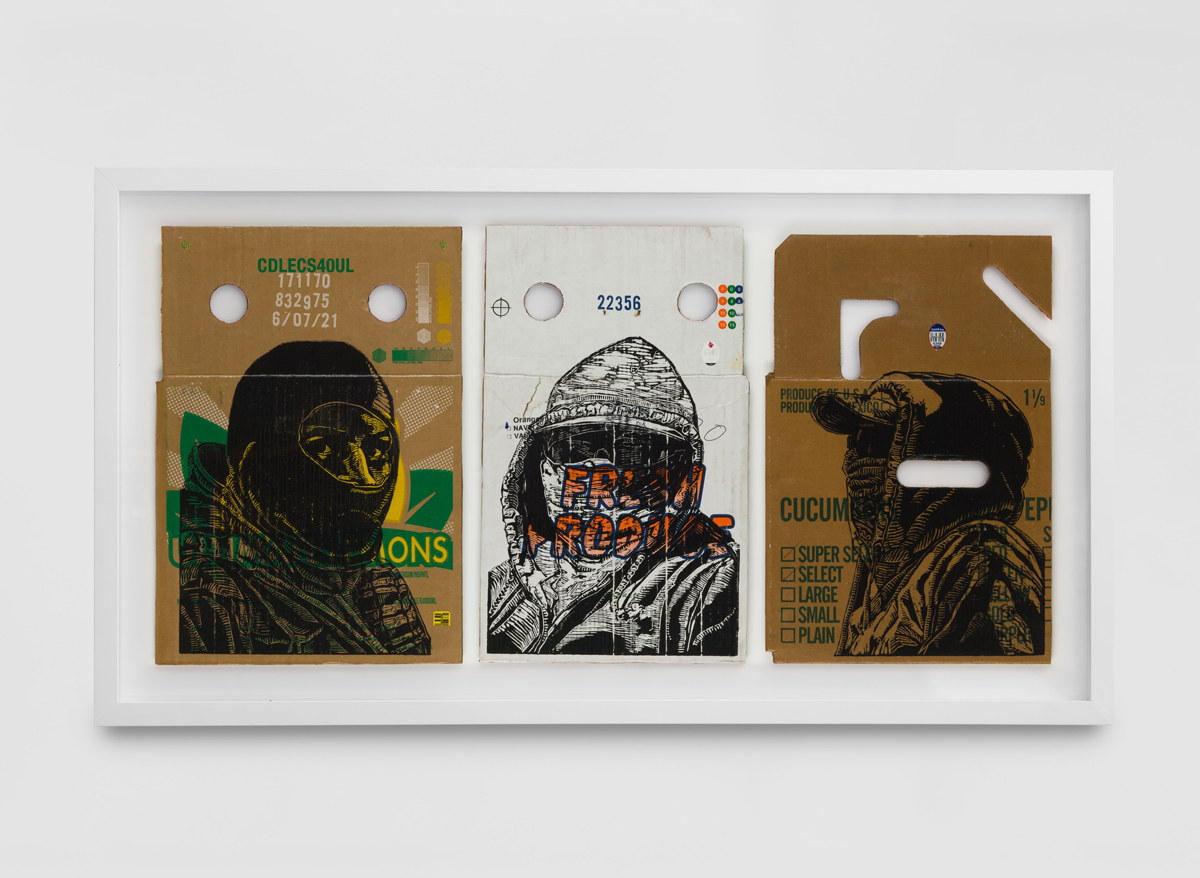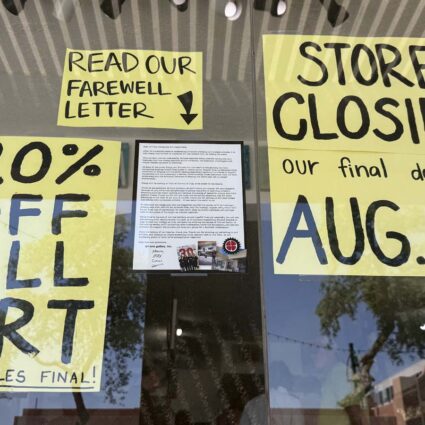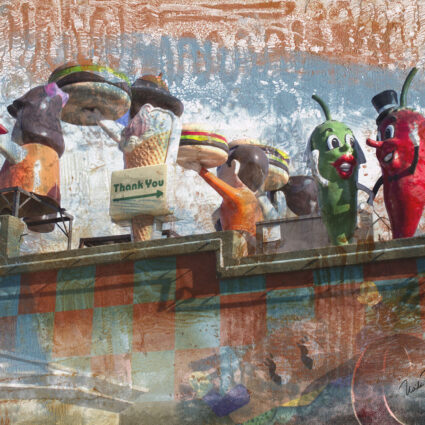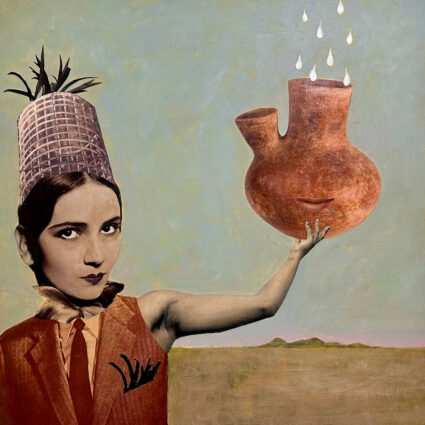Artists working along the U.S.-Mexico border bring the rasquachismo aesthetic to Ya Hecho: Readymade in the Borderlands as the U.S. government escalates its anti-immigrant stance.
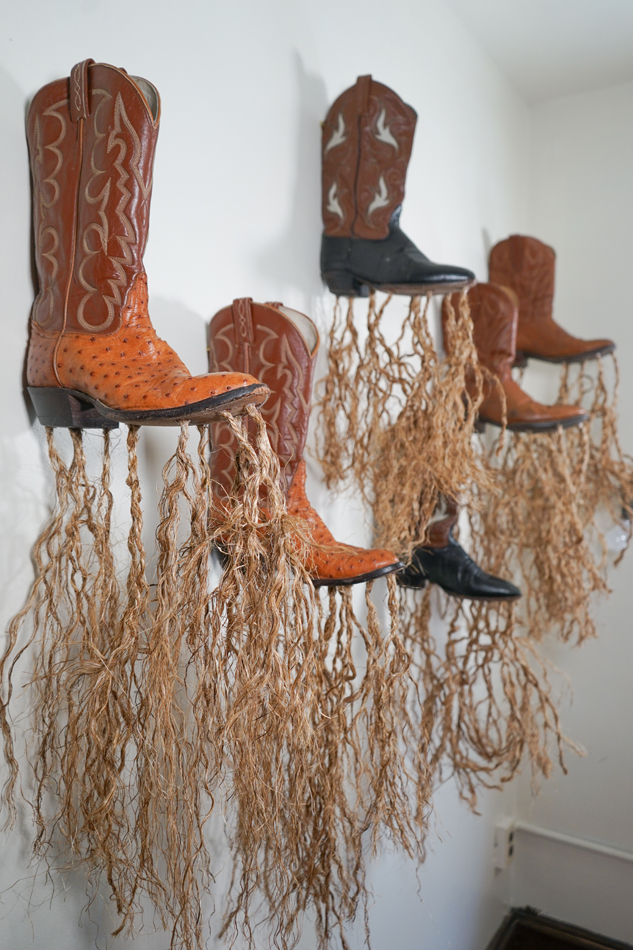
Ya Hecho: Readymade in the Borderlands
July 3–November 30, 2025
Tucson Museum of Art
Zip ties, produce boxes, tz’ite’ beans used in Mayan spiritual practice, car parts, Border Patrol uniforms, asphalt shingles, and sneakers with maps in their soles. Through these and other found, readymade, and mass-produced objects, eighteen contemporary Latinx artists, including Gil Rocha, José Villalobos, and Maria José Crespo, transport viewers to the Southwest borderlands. Working on both sides of the U.S.-Mexico border, they provide a deep, entrancing gaze into the realities of life in the region, bringing forth historical narratives and lived experiences that defy monolithic ideological perspectives.
Curated by Rigoberto Luna, the exhibition explores land, labor, movement, migration, the materiality of place, survival, and resilience—all ubiquitous themes in contemporary art of the region. What sets Ya Hecho apart is its grounding in rasquachismo, an aesthetic manifested by Chicanx artists whose materials and processes are rooted in resourcefulness and using what’s at hand. That sensibility is particularly evident in an image by Gloria Martinez-Granados of agricultural workers cross-stitched onto mesh grocery bags. By contrast, it’s woefully lacking in the visual presentation of museum-commissioned poems that supplement the exhibition, which appear on museum walls as bare text, offering no visual context or design to match the exhibition.
Most striking are several maximalist installations, with their commanding visual presence and compelling emotive quality. Gazing upwards at the bounty of Lorena Ochoa’s towering Junk Removal (2023-25), one imagines the history of each individual object and perceives layers of meaning wrought by layered materials. By including a “FLOODED” traffic sign, Ochoa captures xenophobic fears of immigrants flooding into the U.S., propaganda inundating media spaces, human impacts on climate crises, and the tragic drownings of migrants crossing the Rio Grande. On a more intimate scale, Ochoa questions American “freedoms” with assemblages that include Norman Rockwell artworks and photos of forced deportations during Operation Wetback in the 1950s.
These works only grow more impactful when considered within the context of present-day anti-immigrant policies, practices, and propaganda promulgated by the U.S. government. By embracing the rasquachismo tradition, these artists adapt and transform objects to fight against cultural erasure and cultivate community across a vast landscape of geography and possibility.

